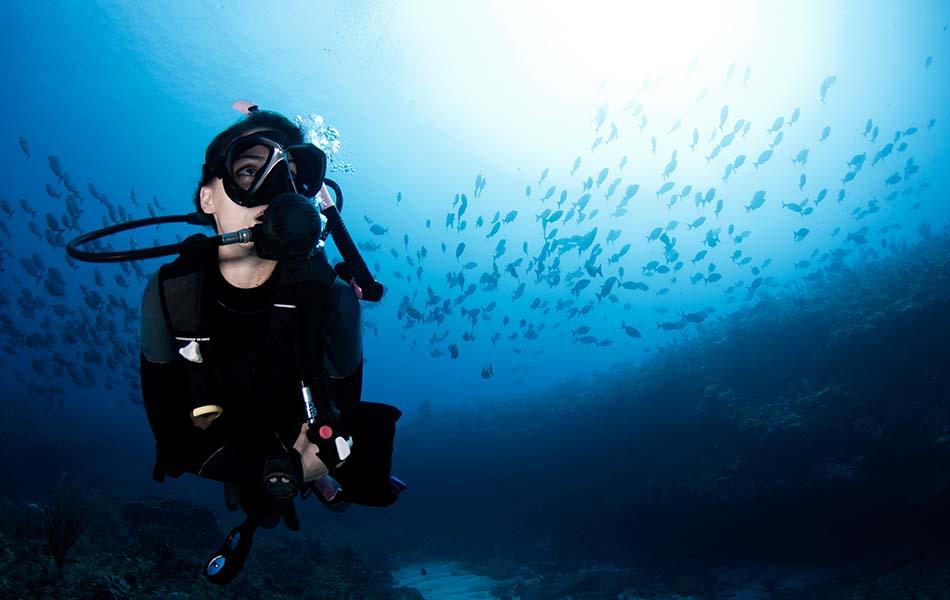
Kirsty Andrews casts an analytical eye over the issue of correct weighting and buoyancy.
Like many instructors - in fact all of them, probably - when I’m teaching a new diver I always emphasise the importance of good buoyancy. It’s the secret behind being a good diver and the key to enjoying your diving, I will say. And it feels pretty darn cool when you do get it right - a bit like Superman as you glide effortlessly by.
Anyway, fairly recently, I got my buoyancy embarrassingly wrong. My main excuse is that it had been an odd year in which for various reasons I’d messed around with my standard kit set-up. I’d swapped between wetsuit and drysuit, used twinsets and singles of various sizes, integrated and non-integrated weights, and three different BCDs. On this dive I calculated the amount of lead I thought I needed, based on that day’s kit, and was about 1kg or 2kg short. I was able to breathe out and descend the shot line without dragging myself down but only just; I felt lighter than usual.
As the dive progressed, I definitely became concerned that I was too light. As the no-deco limit approached, I decided to call the dive and signalled to my buddy to go up as I didn’t want to risk not being able to control my ascent. He was a little surprised as we’d discussed what deco we’d be happy with before we descended, but of course he agreed to the change of plan. I hadn’t even managed to find any big stones to put in my pockets from the seabed, which would usually be the first recourse for lightweight rascals such as myself. I did manage to control my ascent and hold a safety stop, but it wasn’t comfortable.
We had a chuckle about my amateurish antics over a pint afterwards. I’m no novice diver and I’m admitting to an experience I’d otherwise rather forget in the hope of recognising that we all have off days and it’s how we respond to the issue that counts.
Lots of factors can catch us off guard, whether it be salty or fresh water, a new fluffy undersuit, a hefty new torch or a borrowed cylinder (not all weigh the same, even if the same capacity). Being a photographer, it makes a difference what camera equipment I’m using: my macro set-up is negatively buoyant and my wide angle is a bit positive. Even, shock horror, a few pounds piled on in seasonal excess might require an extra lead allocation: a lose-lose situation, that one. I do still log my dives and make a point of logging how much lead I use with different kit set-ups, which can be really useful to refer back to, should I need to change something. If I’d taken a bit more time that day when putting my kit together, I think I would have got it right.
I absolutely don’t wish to suggest that we should err on the side of caution and dive heavy: that is just as bad and you’ll never look like Superman with a BCD full of gas to compensate for the excess lead you’re carrying. In fact, instead of superman we should be like Goldilocks: not too much or too little weighting but just the right amount to be perfect.
Join the BSAC community
The BSAC network is working together to keep people connected to the sport. With online training, special interest webinars, competitions, support to clubs and the trade, and much more...we'd love you to join us.
This column article was originally published in SCUBA magazine, Issue #111 February 2021. For more membership benefits, visit bsac.com/benefits.
Images in this online version may have been substituted from the original images in SCUBA magazine due to usage rights.

 Author: Kirsty Andrews | Posted 02 Apr 2021
Author: Kirsty Andrews | Posted 02 Apr 2021



